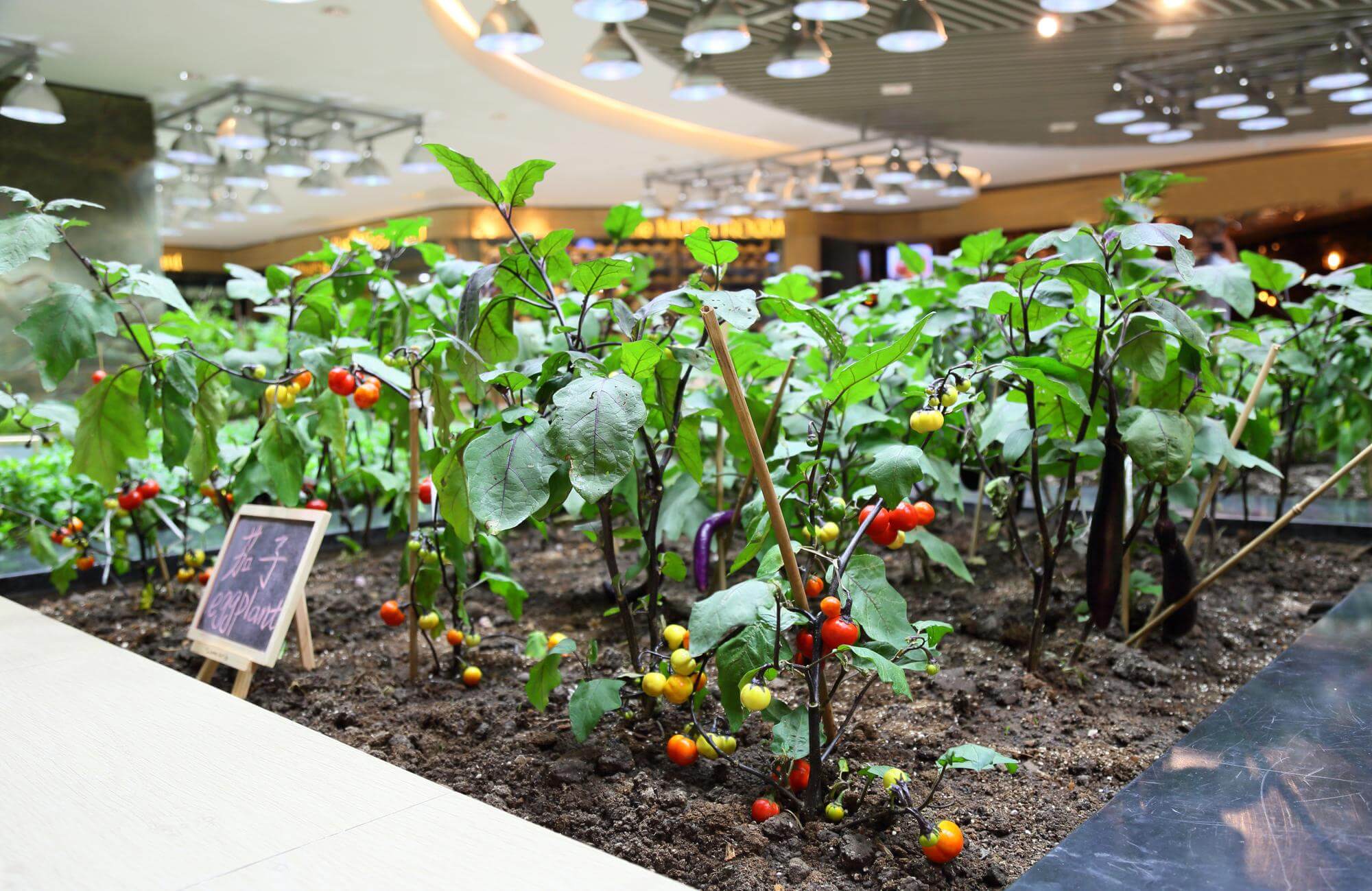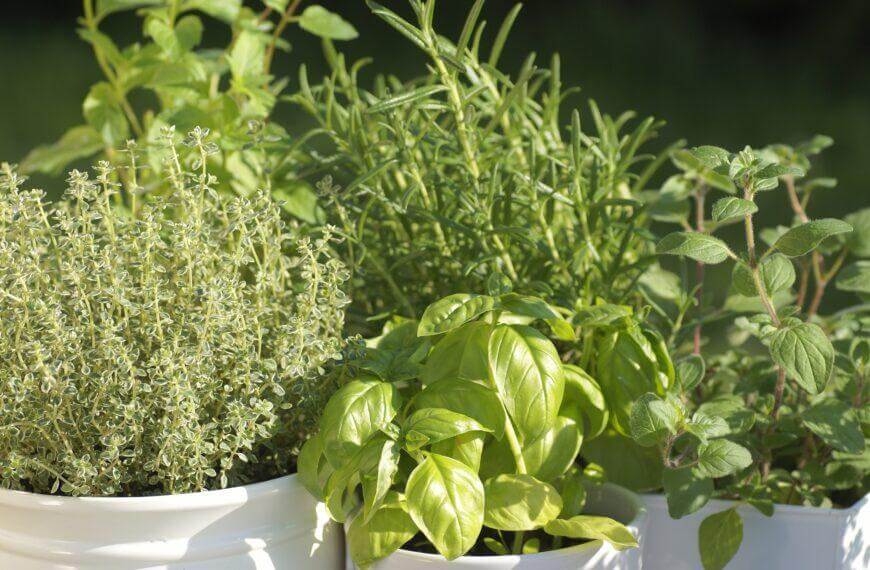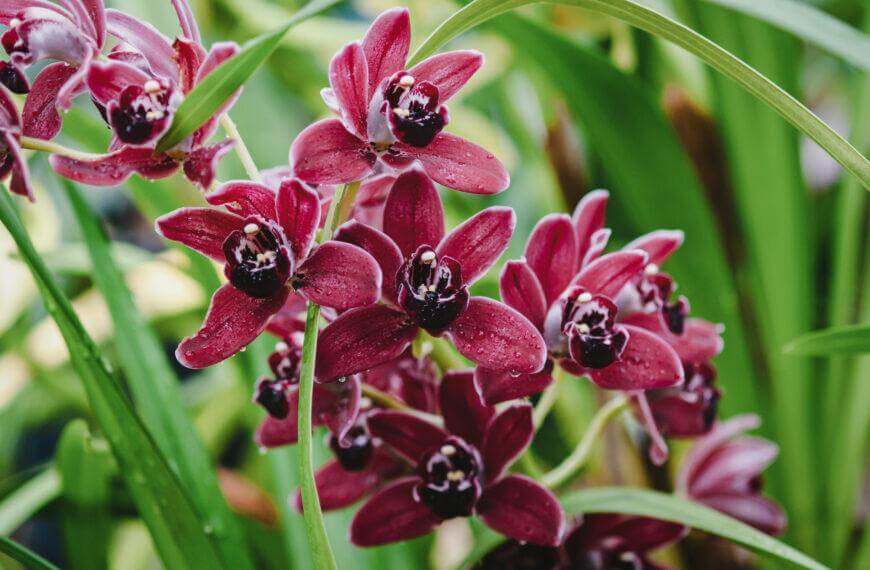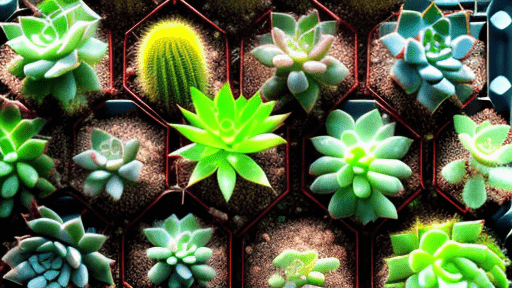Top 10 Vegetables to Grow Indoors
Do you crave fresh produce all year? Grow certain veggies indoors – the perfect solution! Here’s some great options:
- Leafy greens like lettuce, kale, spinach
- Microgreens like pea shoots, sunflower sprouts, radish sprouts
- Mushrooms like shiitake, oyster, button
- Tomatoes such as cherry and grape varieties
- Small hot peppers such as Thai chilies or jalapeños
- Herbs like cilantro, parsley, thyme
- Carrots such as short round “thumbelina” varieties
- Radishes like small red or white globe varieties
- Ginger – grown from a root bought at the grocery store
- Sweet Potatoes – slip a sweet potato into water, wait for it to sprout and plant in soil.
In addition to providing fresh produce and saving space, indoor veggie gardening has other benefits. Year-round availability without worrying about frost damage or seasonal changes.
Pro Tip: Plant these veggies in traditional containers with potting mix that includes peat moss and vermiculite. Top off with organic compost each month. Make sure they get 6-8 hours of sunlight, water regularly and watch for pests.
Who needs a salad bar when you can have a leafy green garden in your own home?
Leafy Greens
To master the art of indoor gardening with leafy greens, turn to ‘The Top 10 Vegetables to Grow Indoors: Fresh Produce All Year Round.’ With a focus on leafy greens, this section highlights the many benefits of cultivating vegetables indoors, including specific advantages to growing leafy greens. Learn more about the rewards of indoor gardening and discover which leafy greens are best suited to thrive in an indoor environment.
Benefits of Growing Leafy Greens Indoors
Indoor leafy greens farming has many benefits for both health and the environment. It’s pesticide-free, year-round, and reduces water and land use. Plus, you can control temperature, humidity, and lighting.
A passionate farmer shared his journey of setting up an indoor leafy greens farm in his apartment. He studied hydroponics and optimized his setup, supplying nearby restaurants and markets with fresh produce all year. His experience proves that indoor leafy greens farming is a fulfilling venture that benefits everyone. Who needs a green thumb when you can have a leafy thumb? Growing leafy greens indoors is easy and rewarding!
Specific Leafy Greens to Grow Indoors
For indoor gardeners, various leafy greens can thrive inside your home. Try growing lettuce, kale, arugula and spinach. They will always supply fresh and organic greens.
- Lettuce: Butterhead lettuce needs low light and moderate temperatures.
- Kale: Kale is popular due to its nutrition and needs direct sunlight for 6 hours.
- Arugula: Arugula is fast-growing with adequate moisture.
- Spinach: Spinach needs attention but yields consistently under medium-light and 75F.
For a twist, try mustard greens, Endive radicchio, and Bok-Choy. They add flavor to your salads.
Pro Tip: For optimal growth, provide proper equipment like grow lights and hydroponic systems for adequate light and humidity. Tomatoes can also add juicy, acidic flavor to your salad!
Tomatoes
To master your indoor tomato growing game, we have got you covered with our solution of discussing the benefits of growing tomatoes indoors with specific types of tomatoes to grow indoors. Discover why growing tomatoes indoors is a fruitful endeavor and how choosing the right types will give you a bountiful yield all year round.
Benefits of Growing Tomatoes Indoors
Growing Tomatoes Indoors: Benefits & Advantages
Gardening fans are loving the practice of growing Tomatoes Indoors. Here’s why:
- You can have a year-round harvest. Outdoors, they’re seasonal.
- Keep pests away. No more bugs ruining your plants.
- Control the environment. Temperature, humidity, lighting – it’s all up to you.
- Cost-effective. Save money and trips to the store or farmer’s market.
Space? No problem! Compact varieties like ‘Micro-Tom’ mean you don’t need a huge garden.
Fun fact: 93% of Americans eat tomatoes regularly, according to NPR.org. Get your own little tomato farm indoors. Goodbye grocery store tomatoes, hello fresh flavor!
Specific Types of Tomatoes to Grow Indoors
Do you want to cultivate tomatoes indoors? Here are some varieties to help you get started:
- Sweet Million: A cherry tomato that yields lots and is great for containers.
- Tiny Tim: A dwarf tomato, perfect for indoor gardening with a small stature.
- Window Box Roma: A paste tomato that’s great for tight spaces.
- Patio Princess: A hybrid tomato with great flavor, perfect for indoors.
To get the best results, make sure to provide lots of light, a temperature of 65-85°F, and properly fertilized soil. Don’t forget: consistency is key for optimal growth. And, watch out for overwatering as this leads to root rot and stunted growth.
Why be content with cucumbers, when you can have amazing tomatoes?
Cucumbers
To grow cucumbers indoors with fresh produce all year round, explore the benefits of growing cucumbers indoors and the specific types of cucumbers that are best suited for indoor cultivation. By understanding the unique advantages of indoor cucumber growing and the optimal varieties for growing indoors, you can enjoy a bountiful supply of fresh cucumbers whenever you desire.
Benefits of Growing Cucumbers Indoors
Reap the benefits of growing cucumbers indoors! Cost savings, year-round supply, and healthier dietary choices are yours when you cultivate fresh greens and herbs in-house. Vitamins A, C, K, magnesium, and potassium are all found in cucumbers!
To protect against pests and diseases, cultivate cucumbers in a controlled environment. Organic methods are better for the environment. Beginners can use hydroponic systems or self-watering pots to get started.
Cucumbers need at least 5-6 hours of sunlight per day. To replicate outdoor conditions, consider placing a fan in the room with the seedlings; this strengthens stems and reduces stretching.
Why not transform your home into a greenhouse and grow as many exotic cucumbers as you’d like?
Specific Types of Cucumbers to Grow Indoors
Growing cucumbers indoors requires the right type. Here are some recommended varieties, plus their needs:
| Cucumber Type | Description | Growing Requirements |
|---|---|---|
| Persian Cucumber | Sweet & crunchy, thin skin. Best for vertical growth. | High humidity. Warm temp (75°F). Ample sunlight. |
| English Cucumber | Thin-skinned, seedless. Ideal for salads & pickles. | High humidity (80%). Cool temp (70°F). Can be grown vertically or horizontally. |
| Miniature Cucumber | Small pickling style. Slightly sour taste. Compact. | Daytime temp (65-70°F). Nighttime (60°F). Avoid direct sunlight. |
Successful indoor cucumber farming requires well-draining soil, consistent watering & fertilizing. Don’t get too caught up on which type you choose; focus on the optimal conditions. Try indoor gardening & enjoy fresh cucumbers all year long!
Carrots
To grow carrots indoors successfully, you need to learn about the benefits of growing carrots indoors and specific carrots that grow well in indoor environments. This knowledge can help you achieve fresh produce all year round without relying on outdoor growing seasons. So, let’s dive into the benefits of growing carrots indoors and explore specific carrots suitable for indoor planting.
Benefits of Growing Carrots Indoors
Orange Thumb: Grow Carrots Indoors!
Grow carrots indoors and enjoy their benefits! Year-round availability, space-saving, and control of growing conditions are just a few. Plus, they are a great source of vitamin A and other essential nutrients.
Experiment with different varieties and cultivation methods to see what delicious results you can achieve! One woman proved that it’s possible – even in a small apartment in Manhattan! Now she enjoys fresh, homegrown carrots all year round.
So, don’t be afraid to give it a try – who needs a green thumb when you can have an orange thumb?
Specific Carrots to Grow Indoors
Indoor Carrot Varieties – Spice Up Your Garden!
Carrot-lovers can have fun and be productive by growing carrots indoors. Varieties that are best suited for this include Thumbelina, Baby Little Finger, Paris Market, Short n Sweet, Nantes Half Longs and Chantenay Red Core. These carrots are small and need minimal space, so they’re ideal for indoor growing. Plus, they require less water and have a shorter growing time than outdoor varieties.
Ensure the soil has good drainage and the light is adequate (natural or artificial). Plus, temperature should be just right.
Did you know carrots come in various colors – purple, yellow, red, white and even black? This is due to carotenoids or pigment in the root veg.
Cultivating crops indoors is becoming more popular as it has many benefits. To make sure your plants do well, understand the ideal conditions they need.
Carrots have been grown since ancient times. The first purple carrots were grown in Afghanistan 5k years ago and then spread across Europe in the Middle Ages. People started using them as medicine, before they became a valuable staple crop.
Spice up your meals with carrots, but don’t overdo it or else you’ll regret it in the bathroom!
Peppers
To grow fresh peppers all year round indoors, explore the benefits of growing peppers indoors in the ‘Peppers’ section. Learn about specific types of peppers ideal for indoor growth in the sub-sections: Benefits of Growing Peppers Indoors and Specific Types of Peppers to Grow Indoors.
Benefits of Growing Peppers Indoors
Indoor Pepper Cultivation – Benefits for Home Growers!
Peppers are a great crop – they’re versatile and nutritious. Growing peppers indoors presents lots of advantages for home cultivators.
- Year-round harvests: Indoors you can control temperature, light and humidity. This means you can have fresh peppers all year round!
- Pest-free environment: Indoors, pests are less of a problem. This means no need for harmful pesticides. This is better for your health and the environment.
- Increased space efficiency: Outdoors, peppers need lots of garden space. But indoors, they do great in pots or containers even in small spaces like apartments.
Plus, growing peppers indoors reduces pollution and carbon emissions that come from transportation.
For example, an arthritis sufferer was restricted from outdoors. But she still enjoyed year-round pepper harvests from her indoor setup. This gave her lots of experiential and therapeutic benefits – such as improved mood and reduced anxiety from tending to her plants daily.
So why not forget the therapist, and grow your own hot peppers to sweat out your stress indoors?
Specific Types of Peppers to Grow Indoors
Grow a unique taste indoors! Peppers are a versatile plant that can add flavor and spice to any dish. Here are some exclusive kinds you can grow:
- Thai Bird Pepper – Small and spicy. Perfect for soups, curries and stir-fries.
- Habanero Pepper – Fruity and hot, these peppers add red-orange color and heat to salsas, sauces and marinades.
- Tabasco Pepper – From Mexico, this chili pepper is essential in hot sauce. It’s hot but has a tangy flavor.
Growing peppers indoors is an art. Get the proper lighting, humidity, soil, seeds and water. Careful attention will yield fruitful results.
Peppers have a long history. Mayans used them for food and medicine. Christopher Columbus brought them back from Central America. Now they are a popular commodity due to their flavor and medicinal properties. So, why not add some spice to your life? Try growing peppers indoors!
Radishes
To grow fresh radishes all year round, you need to understand the benefits of growing radishes indoors and know which specific radishes are suitable for indoor growth. In this section, we’ll dive into the world of radishes and give you insight into the advantages of growing them indoors. We’ll also explore specific types of radishes that thrive in indoor conditions.
Benefits of Growing Radishes Indoors
Cultivating Radishes indoors is advantageous due to their handy size and suitability for different settings. Plus, they mature quickly! They are full of nutrients, plus add a tasty touch to any plate.
Moreover, you can control the environment and guard against pests or bad weather. The short growth period yields great results with minimal effort. Plus, Radishes are packed with calcium, potassium, vitamins A, and C. Not to mention, having fresh Radishes all year saves money.
Interestingly, Radishes were grown by ancient civilizations for more than 4000 years. Egyptians used them for medication, and Greeks for sport – athletes would try to eat the most before running races! If you’re searching for a new indoor hobby, give radish-growing a go – it’s a great way to zest up your life (and your salad!).
Specific Radishes to Grow Indoors
Are you ready to grow your own radishes indoors? Here are six varieties that are perfect for an indoor environment:
- Cherry Belle: Small, red and ready in 22-30 days. Mild and crisp!
- French Breakfast: Vibrant and oval-shaped. A spicy taste, ready in 25-30 days.
- Watermelon: Green and pink, it takes 60-70 days but has a sweet, refreshing flavor like its namesake fruit.
- Black Spanish Round: Bold and peppery, takes 60-70 days to be ready.
- Easter Egg: Pink, purple, red and white. Mild-tasting and matures in 25-30 days.
- Miyashige White: White-skinned and crisp. Ready in 40-50 days.
These varieties need adequate light and water to grow successfully. There are lots more types to choose from too – like Daikon Radish and French Dressing.
Start experimenting and find the perfect match for you! Radishes are spicier than beets, so live dangerously!
Beets
To grow beets indoors successfully with a steady supply of fresh produce, explore the benefits of growing beets indoors and learn about the specific types of beets that thrive in contained environments. This section covers the practical advantages of indoor beet farming along with the two sub-sections, which briefly discuss the benefits of growing beets indoors and the recommended types of beets to grow indoors.
Benefits of Growing Beets Indoors
Grow Beets Indoors – Surprising Benefits!
Gardening with beets indoors offers amazing benefits. Urban gardeners will appreciate being able to grow year-round, no matter the weather. You can also control the environment for higher quality produce.
- Increased Yields: Grow beets in an indoor environment for more flexibility. This allows you to create the right conditions for optimal growth and more crops per square meter.
- Cost Efficiency: LED lights and other indoor gardening techniques give you higher yields with shorter cycles and more plants per square foot.
- Better Tasting Beets: Indoor cultivation optimizes the soil’s nutrient composition, providing moisture regulation and a better root vegetable taste, color, texture. It can even reduce pests and diseases.
Plus, you can grow them in winter without pesticides or herbicides. Health-conscious people can get chemical-free veggies. And you can save money by growing seeds from previous harvests!
Pro Tip: Add coffee grounds to your beet growing soil. This adds minerals like potassium and nitrogen, helping your beets thrive.
Give your thumb some flair! Grow beets indoors and add color – and flavor – to your home-grown cuisine.
Specific Beets to Grow Indoors
Beets that grow indoors? Yes! Some varieties can thrive with ease. Detroit Dark Red, Golden Detroit, Bulls Blood, Chioggia and Avalanche. All have high success rates, when grown hydroponically. These beets also have distinct hues and flavors, making them a delight to cultivate.
Lighting systems are essential, since natural sunlight may be limited. Keep temperatures between 55-75°F (13-24°C). Regular maintenance is key – remove any diseased or damaged leaves, to stop pests and diseases.
Pro Tip: To increase your yields, consider using artificial pollination methods. Vibrating flowers with electric toothbrushes or cotton swabs will transfer pollen more efficiently. This will lead to increased fruit production.
Microgreens
To dive deeper into the world of microgreens, check out how growing them indoors with the right set-up can yield amazing benefits. Not only can you enjoy fresh produce all year round, but you can also save money and decrease your ecological footprint. Discover the specific types of microgreens you can grow indoors and what benefits they bring to your health and daily meals.
Benefits of Growing Microgreens Indoors
Microgreens are a great option for those looking to grow their food indoors. They take up minimal space and time, and are super nutritious! Plus, they come in a variety of colors and textures. Cooking with microgreens is incredibly versatile, too – you can use them in salads, sandwiches, or smoothies.
Interesting fact: microgreens have been around for centuries! The Chinese cultivated mustard greens oilseed as early as 2000 BC. Ancient Egyptians used sprouts for medicinal purposes. And during World War II, Europeans grew microgreens as emergency provisions.
Bring some green into your home with these mini sprouts – they’ll make your taste buds and your decor happy!
Specific Types of Microgreens to Grow Indoors
Gardening indoors? Six microgreens are great to start with: Arugula, radish, basil, pea shoots, cilantro, and sunflower – all these thrive in indoor environments.
Plus, there’s plenty of unique varieties to explore! Experiment with different seeds and growing conditions to find what works best for you.
One gardener loves spinach microgreens. They take longer to grow, but offer mild flavour, high yields per tray, and dense structure. Mix them with sunflowers if you’re vermicomposting – and you’re ready to go! Micro-living made easy.
Herbs
To grow fresh herbs indoors, you need to understand the benefits of growing them and the specific herbs you can grow indoors. In order to help you with that, this section of the article titled ‘The Top 10 Vegetables to Grow Indoors: Fresh Produce All Year Round’ presents you with two sub-sections – 10.1 Benefits of Growing Herbs Indoors and 10.2 Specific Herbs to Grow Indoors.
Benefits of Growing Herbs Indoors
Indoor Herb Gardening – Reasons to Cultivate Your Own Greens
Herbs grown indoors boast many advantages. From having fresh produce to hand to adding fragrance and beauty to your house! Here are 3 key advantages of developing your own indoor herb garden:
- Convenience: Herbs at home mean no extra trips to the grocer for one ingredient.
- Health Benefits: Picked fresh herbs are more nutritious than shop-bought.
- Cost-Effective: With proper care, indoor herb gardens provide a steady supply at a lower price.
Furthermore, you have control over lighting and temperature which aids in growth.
Pro Tip: Before you start, research each plant’s individual needs and growth habits!
Spice up your home with these herbs tailored for indoors.
Specific Herbs to Grow Indoors
Indoor herb gardening is a great way to bring life and flavor to your dishes! Here are some herbs that are easy to cultivate indoors:
- Basil – loves sunshine
- Chives – prefers cooler and moist soil
- Cilantro – needs bright, indirect light and regular watering
- Mint – thrives with partial sun and moist soil
- Parsley – needs well-draining soil and bright, indirect light
- Rosemary – needs lots of sun, moderate watering, and well-drained soil
To ensure success, be careful not to use artificial fertilizers. They contain chemicals that can ruin the taste of your herbs. Instead, use organic compost or natural fertilizers like worm castings.
Pro Tip: Trim your plants regularly. This helps keep them healthy and promotes growth.
Frequently Asked Questions
Q: What are the top 10 vegetables to grow indoors?
A: The top 10 vegetables to grow indoors are cherry tomatoes, lettuce, spinach, kale, carrots, radishes, green onions, peppers, beans, and peas.
Q: Can I use any pot to grow vegetables indoors?
A: It is recommended to use a pot that has drainage holes and is large enough to allow the roots to spread out. A container that is 8-12 inches deep and wide is ideal.
Q: How much sunlight do indoor vegetables need?
A: Most vegetables need at least 6-8 hours of sunlight a day, but some can grow with less. Supplemental light can also be used if needed.
Q: How often do indoor vegetables need to be watered?
A: Vegetables need to be watered when the top inch of soil feels dry. The frequency will depend on factors such as temperature and humidity.
Q: Do indoor vegetables need fertilizer?
A: Yes, indoor vegetables will need fertilizer to provide them with the necessary nutrients. Organic fertilizer options can also be used.
Q: Can I grow vegetables indoors all year round?
A: Yes, growing vegetables indoors allows for a continuous harvest all year round. Some vegetables may have certain seasons that are optimal for growing, but with proper care, they can be grown all year round.




